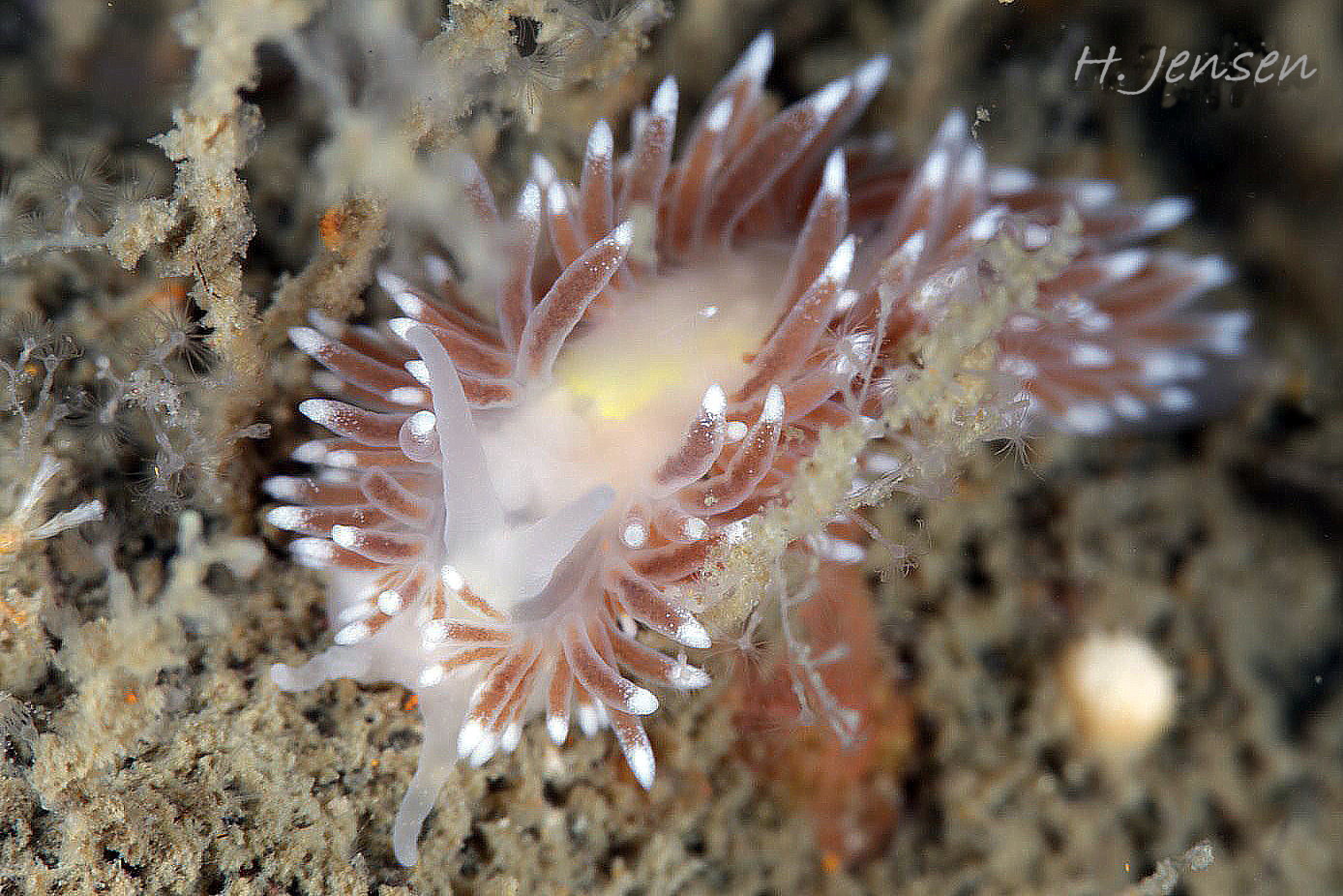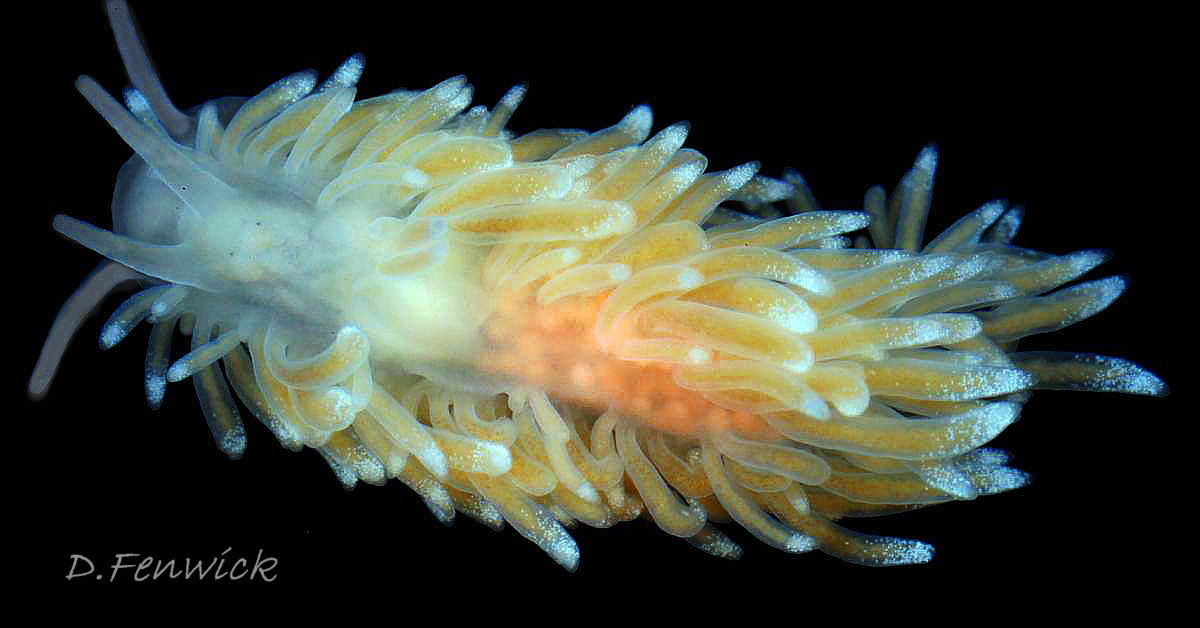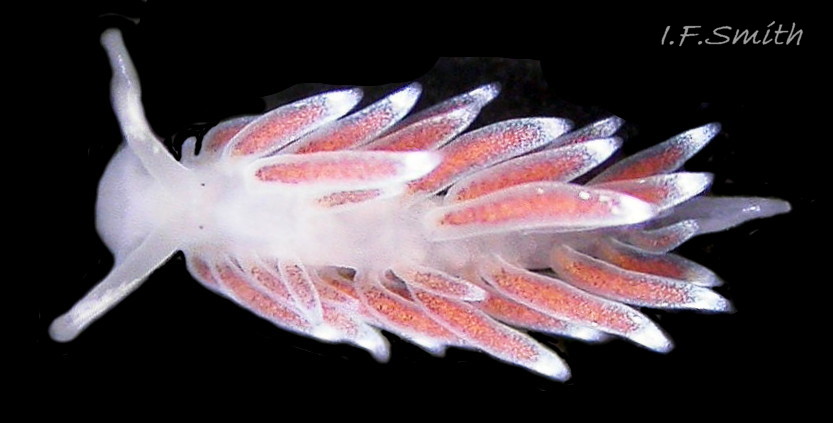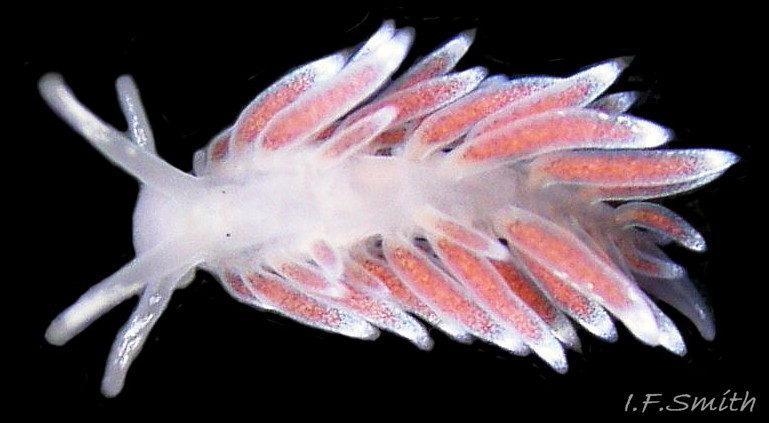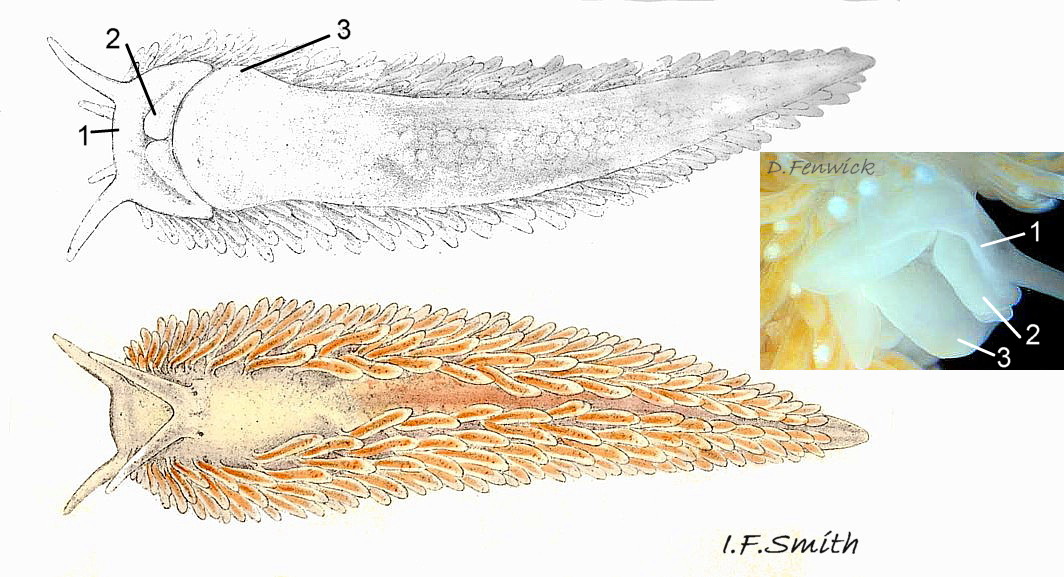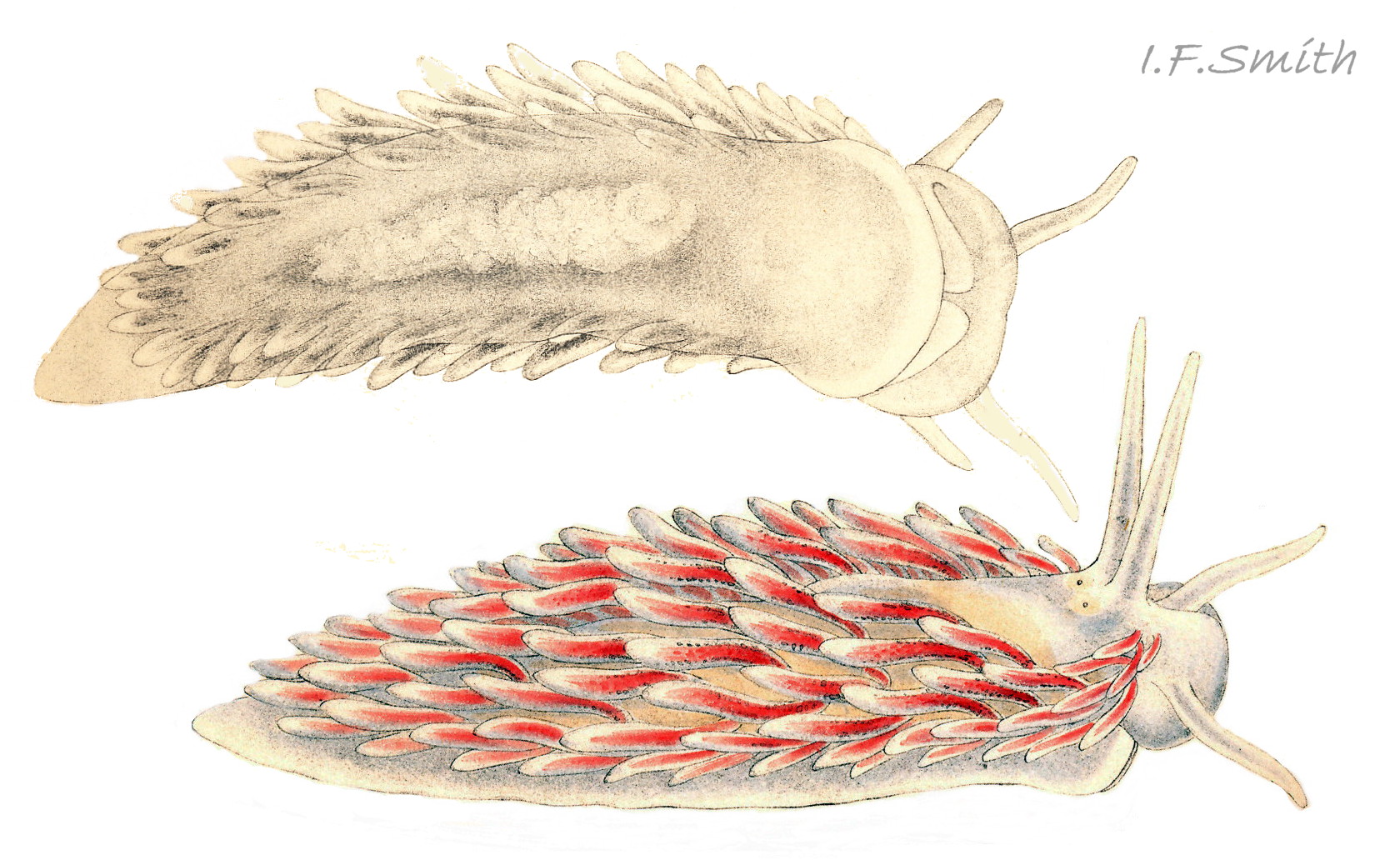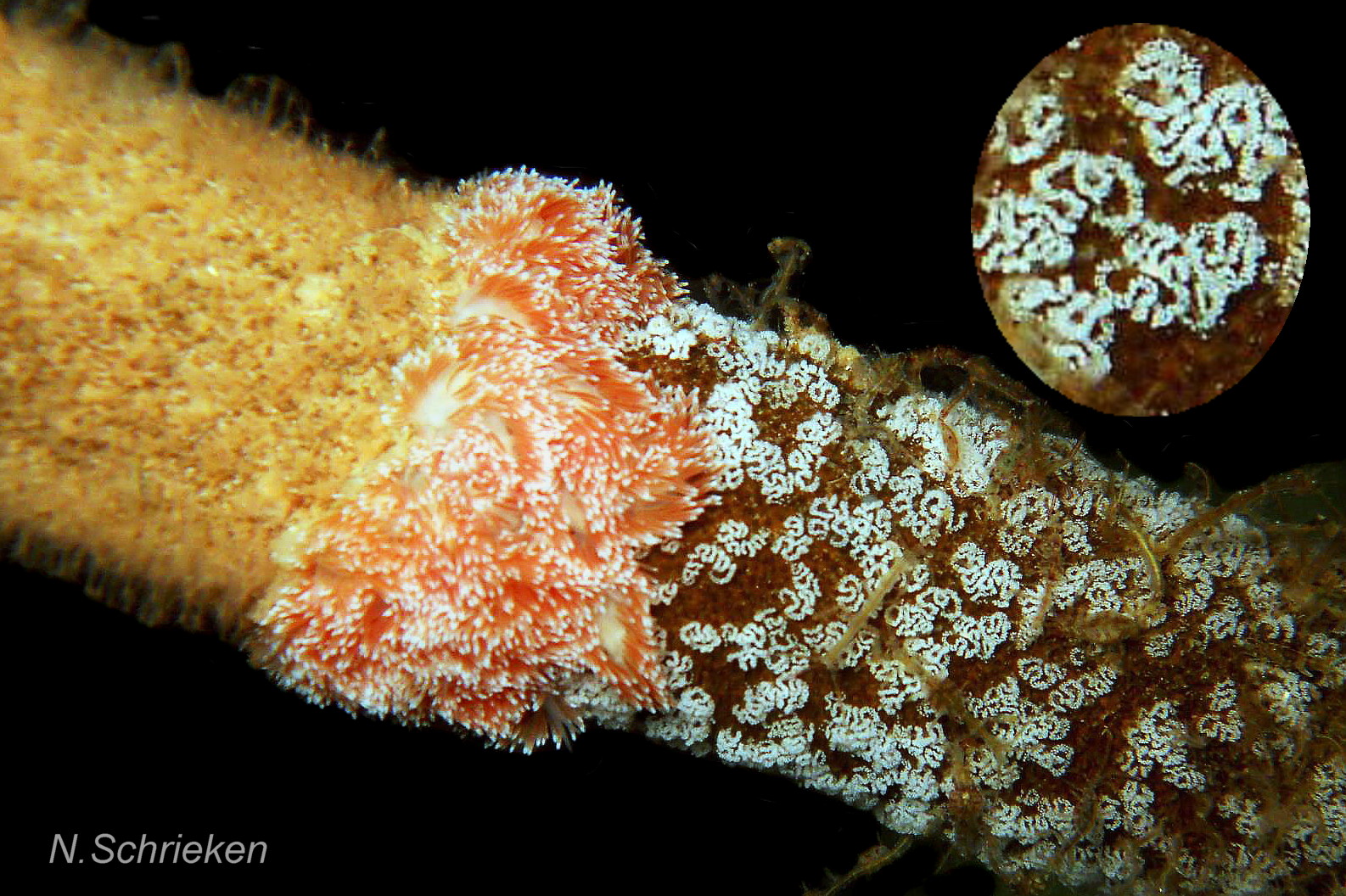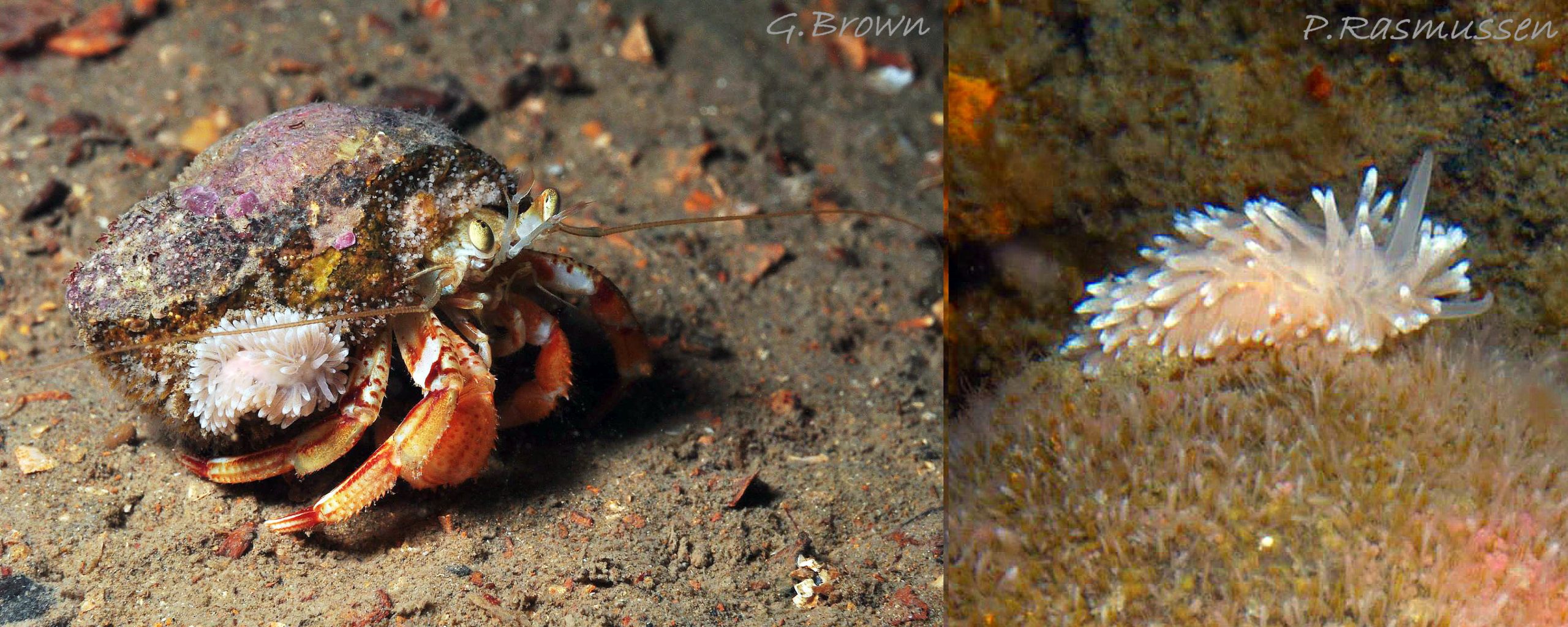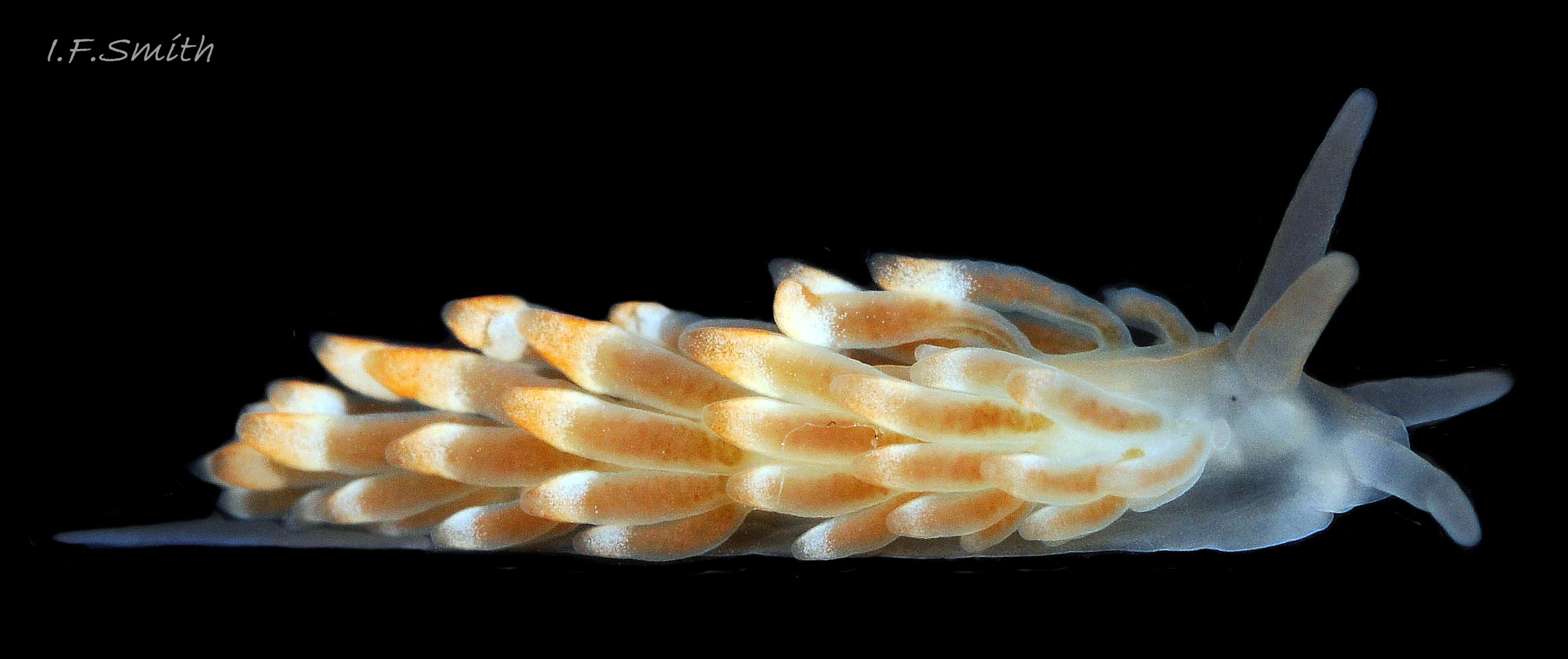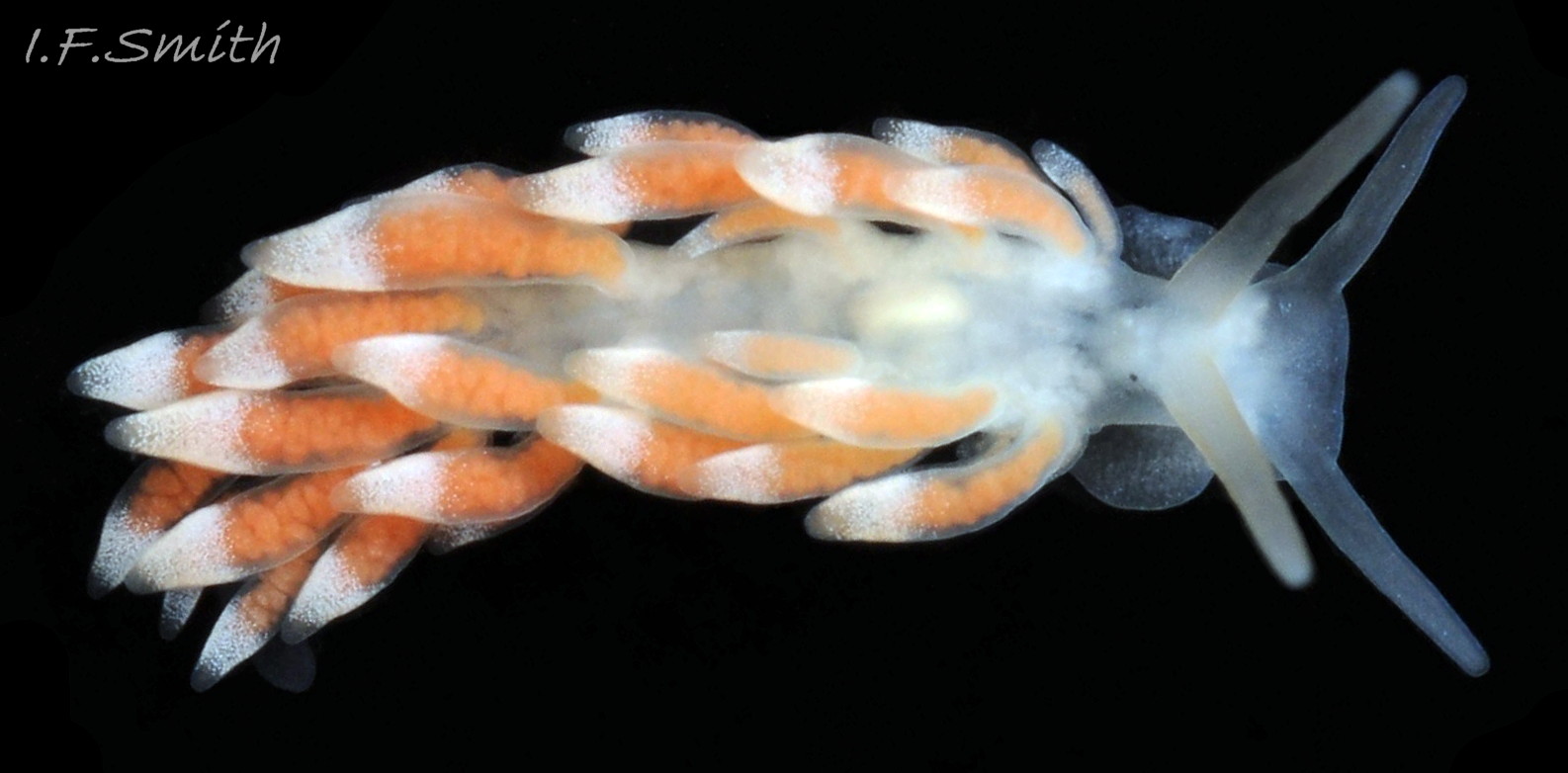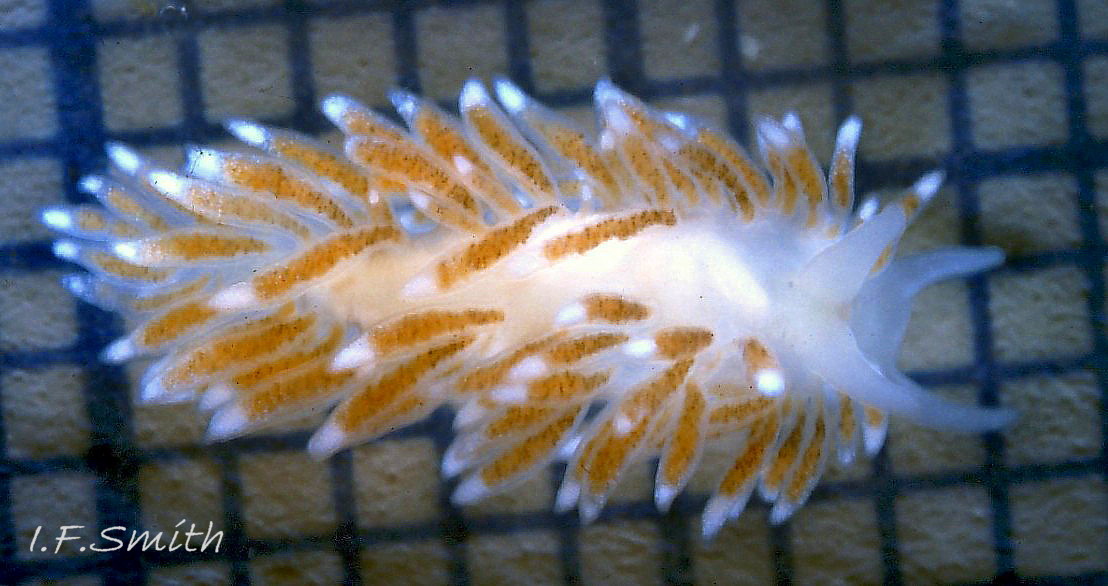Click image to enlarge with full caption. Main text below slider.
Cuthona nana (Alder & Hancock, 1842)
Current taxonomy: World Register of Marine Species www.marinespecies.org/aphia.php?p=taxdetails&id=141627
Synonyms: Eolis nana Alder & Hancock, 1842; Eolis peachii Alder & Hancock, 1848.
GLOSSARY BELOW
Description
C. nana grows up to 28 mm long. The translucent white body reveals, in the anterior half, white or yellow reproductive and digestive organs 01 Cuthona nana and internal black eyes on the circum-oesophageal nerve ring to the rear of the rhinophores and, in the posterior half of mature specimens, pink 02 Cuthona nana or white 03 Cuthona nana spheroid ovotestes. There are no opaque surface markings.
On full grown adults 01 Cuthona nana & 02 Cuthona nana , there are numerous cerata arranged in crowded rows on each side of the body but, usually, most of the notum is exposed. On young specimens up to 8 mm long the cerata are fewer, and are all to the rear of the rhinophores 04 Cuthona nana . With growth above 8 mm, the cerata extend in front of rhinophores 01 Cuthona nana & 02 Cuthona nana . This ontogenetic difference led Alder and Hancock to describe it as two species; full grown adults as Eolis peachii (A&H, 1848) 05 Cuthona nana and young adults as E. nana (A&H, 1842) 06 Cuthona nana . The integument of the cerata is translucent white with a fine powdering of opaque white, which is densest subapically 03 Cuthona nana . The visible internal digestive gland is brown 01 Cuthona nana , yellowish-brown 02 Cuthona nana , reddish-brown 04 Cuthona nana or red 07 Cuthona nana . Those fed on female Hydractinia are reported to be darker than those fed on male Hydractinia (Thompson & Brown, 1984). The translucent white apex of each ceras contains a white cnidosac which is concealed by the dense white powdering.
The smooth, translucent white rhinophores sometimes have opaque white surface pigment on the distal half 04 Cuthona nana , but many do not.
Ventrally, the head consists of the lips of a very wide mouth 05 Cuthona nana . The lower lip has a deep medial cleft. The translucent white oral tentacles sometimes have opaque white surface pigment on the distal half 04 Cuthona nana , but many do not. The foot is rounded and widest at the anterior and tapers steadily to the pointed posterior tip 05 Cuthona nana . There are no propodial tentacles.
Key identification features
Cuthona nana
1) Smooth, translucent white rhinophores and oral tentacles, sometimes with distal opaque white pigment 04 Cuthona nana .
2) Cerata numerous, crowded and extend forwards of rhinophores in specimens over 8 mm long 01 Cuthona nana .
3) Cerata have a fine powdering of opaque white, which is densest subapically 03 Cuthona nana .
4) On Hydractinia echinata, often on the shell of Hermit crab on muddy substrate 08 Cuthona nana , but also on hard substrate without Hermit crab 07 Cuthona nana .
Similar species
Catriona aurantia (Alder & Hancock, 1842)
( 09 Cuthona nana & 10 Cuthona nana).
1) Translucent smooth rhinophores tinted orange-brown.
2) Cerata not crowded and do not extend forwards of rhinophores.
3) Powdery opaque white or orange covers distal part of cerata; more extensive and prominent than on C. nana.
4) Does not feed on Hydractinia
Habits and ecology
C. nana lives at LWST to 30 m depth. Often on Hydractinia echinata on shells of Hermit crabs on muddy sand 08 Cuthona nana . It is also found on H. echinata growing on natural 11 Cuthona nana or man-made hard substrate. Often solitary, but mass feeding on H. echinata coating a metal rail has been observed on a wreck 07 Cuthona nana where about forty fed abreast clearing the pipe of H. echinata and leaving spawn behind as they progressed.
Like other nudibranchs, C. nana is a simultaneous hermaphrodite. A convoluted ribbon of spawn is laid on or near H. echinata 07 Cuthona nana . Veliger larvae drift as plankton for over two weeks before settling on the sea floor and transforming into the adult form. Breeding occurs in most months, with a maximum in spring. There are several generations each year.
Distribution and status
C. nana is a boreo-arctic species with a range from Greenland and Spitzbergen to Bretagne, France. GBIF map www.gbif.org/species/2292315 . There are reports of it from North America; those in the Pacific are usually recorded on iNaturalist (accessed 26 July 2022) as Cuthona divae (Er. Marcus, 1961), but some recorders regard it as C. nana though it extends into warmer water than C. nana in Europe.
In Britain and Ireland there are scattered records on coasts where H. echinata occurs, with most records concentrated in western Scotland and Orkney; UK map NBN species.nbnatlas.org/species/NBNSYS0000174810 .
Acknowledgements
For use of images I gratefully thank George Brown, David Fenwick, Heine Jensen, Poul E. Rasmussen and Niels Schriecken.
References and links
Alder, J. & Hancock, A. 1845-1855. A monograph of the British nudibranchiate mollusca. London, Ray Society.
Full grown adults as Eolis peachii Fam 3, Plate 10. www.biodiversitylibrary.org/item/131598#page/320/mode/1up
Young as Eolis nana Fam 3, Plate 25. www.biodiversitylibrary.org/item/131598#page/386/mode/1up
iNaturalist (accessed 26 July 2022) Cuthona divae (Er. Marcus, 1961) Map tab at www.inaturalist.org/taxa/47399-Cuthona-divae
Thompson, T.E. & Brown, G.H. 1984. Biology of opisthobranch molluscs 2. London, Ray Society.
Glossary
cerata = (sing. ceras) lobes on dorsum of aeolids and some other seaslugs.
circum-oesophageal nerve ring = ganglia-bearing nerve cord (the ‘brain’) which encircles the oesophagus in gastropods.
cnidocytes = explosive stinging cells of Cnidaria. en.wikipedia.org/wiki/Cnidocyte
cnidosac = storage capsule at tips of cerata of Aeolidiidae for ingested unexploded cnidocytes.
digestive gland = organ in gastropods which acts like liver and pancreas in mammals to absorb food.
distal = away from centre of body or from point of attachment.
ganglia = (sing. ganglion) knots containing sensory cell bodies on a nerve cord, which conducts impulses to innervate organs of the body.
LWST = low water spring tide; two periods of a few days each month when tide falls lowest.
notal = (adj.) of the back.
notal ridge = ridge on dorsal surface.
notum = (of seaslugs) the dorsal surface.
ontogenetic = (adj.) relating to development of an organism through all its growth stages.
ovotestis = (pl. ovotestes) hermaphrodite organ serving as both ovary and testis.
propodial tentacles = tentacular, lateral extensions on anterior of the foot.
propodium = anterior portion of gastropod foot. (adj. propodial).
rhinophores = chemo-receptor tentacles on top of head of nudibranch.
veliger = shelled larva of marine gastropod or bivalve mollusc which moves by action of cilia on a velum (bilobed flap). Stage may be passed in plankton or within liquid-filled egg-capsule.
